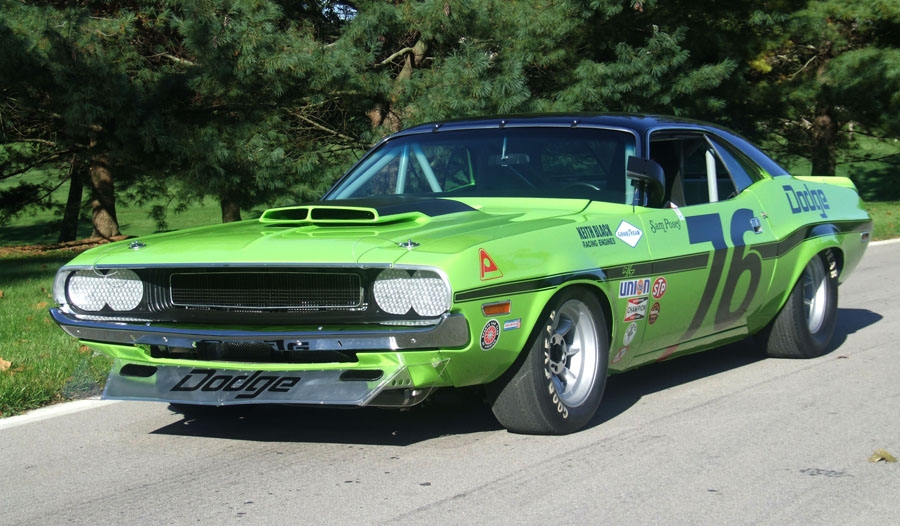Chassis Number: TA028
This factory racer is a time capsule back to the height of the American muscle car revolution. Developed in the AAR (All American Racers) chassis shop of legendary racer/owner Dan Gurney, the car was then transferred to Ray Caldwell’s Autodynamics Racing fabrication shop. There, Autodynamics finished the chassis developmental work and took over final race preparation and race-day team responsibilities. This specific race car was one of only two (#76 and #77) factory-backed Dodge racing Challengers ever produced, and was the template car for the popular street version sold through the Dodge dealer organization, the Dodge Challenger T/A.
With Sam Posey as the primary driver for the team, Autodynamics campaigned these cars in the glory days of the 1970 SCCA Trans-Am series. Number 76 was raced four times in the 1970 Trans-Am series, three times driven by Sam Posey, who drove it at Donnybrooke, St. Jovite and in the Kent race. In the final race held at Riverside, Tony Adamowicz was the driver while Sam drove #77.
Features of this car include one of its original Keith Black Trans-Am racing engines that has been fully rebuilt and is spec-correct for the 1970 SCCA Trans-Am racing season. Other key original racing components include the transmission, rear end, suspension and wheels, plus much more.

